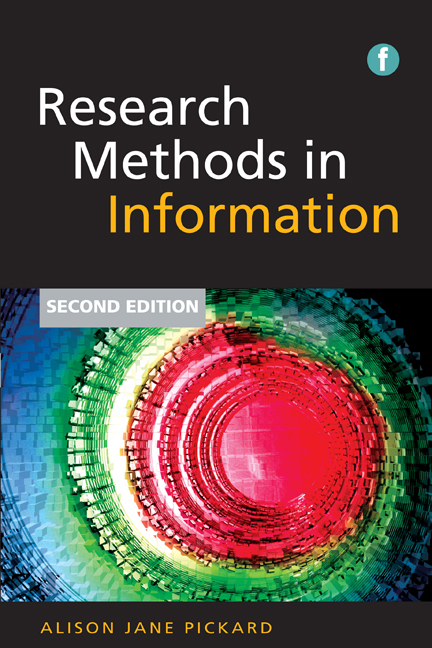Book contents
- Frontmatter
- Contents
- Preface to the second edition
- Acknowledgements
- Introduction
- Part 1 Starting the research process
- Part 2 Research methods
- 8 Case studies
- 9 Surveys
- 10 Experimental research
- 11 Usability testing
- 12 Ethnography
- 13 Delphi study
- 14 Action research
- 15 Historical research
- 16 Grounded theory: method or analysis?
- Part 3 Data collection techniques
- Part 4 Data analysis and research presentation
- Part 5 Glossary and references
- Index
9 - Surveys
from Part 2 - Research methods
Published online by Cambridge University Press: 08 June 2018
- Frontmatter
- Contents
- Preface to the second edition
- Acknowledgements
- Introduction
- Part 1 Starting the research process
- Part 2 Research methods
- 8 Case studies
- 9 Surveys
- 10 Experimental research
- 11 Usability testing
- 12 Ethnography
- 13 Delphi study
- 14 Action research
- 15 Historical research
- 16 Grounded theory: method or analysis?
- Part 3 Data collection techniques
- Part 4 Data analysis and research presentation
- Part 5 Glossary and references
- Index
Summary
The aim of a survey is to obtain information which can be analysed and patterns extracted and comparisons made.
(Bell, 1999, 13)Introduction
The purpose of survey research is to gather and analyse information by questioning individuals who are either representative of the research population or are the entire research population. The term ‘survey’ usually refers to a study that has used a representative sample; if the entire population is involved in the study it is a ‘census’. Questions must be asked using a standardized questioning procedure applied equally and consistently to all research participants.
The aim of survey research is to study relationships between specific variables, which are identified at the outset of the research and stated as either a hypothesis or a research question, or to describe certain characteristics of the population. The findings from the survey can then be generalized to the wider population. Survey research can include qualitative and quantitative research, but is usually quantitative with a limited qualitative element, which is more likely to be anecdotal than truly qualitative.
The term ‘survey’ is often used interchangeably with ‘questionnaire’; the two are not the same thing and it can lead to confusion if the distinction between the two is not made very obvious. A survey is a research method, the purpose and aims of which have already been stated; although data collection must be standardized, there are options for data collection within a survey. A questionnaire is a very specific data collection technique, which can be used within a variety of research methods. A survey, then, is the research method used to structure the collection and analysis of standardized information from a defined population using a representative sample of that population. Probability sampling is vital in order to make valid general izations about the wider population. When non-probability sampling is used you must take care with any statements you make that attempt to generalize to the wider population.
There are two types of survey: descriptive surveys and explanatory surveys. It is possible to apply both methods in the same study, as will become apparent when examining the nature of the two approaches.
- Type
- Chapter
- Information
- Research Methods in Information , pp. 111 - 118Publisher: FacetPrint publication year: 2013

